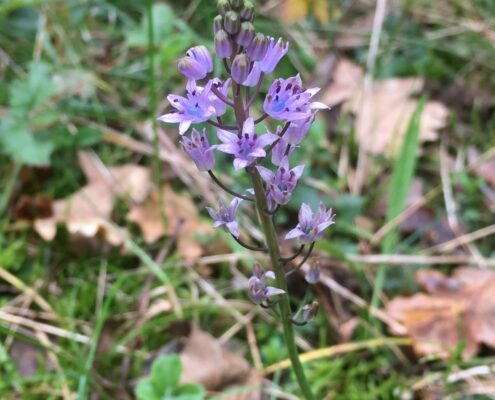 https://greenmarked.it/wp-content/uploads/2024/07/Bleachedcoral.jpg
768
1024
Paula Ruiz del Coro
https://greenmarked.it/wp-content/uploads/2022/01/LOGO-GREENMARKED-SITO-600x600.png
Paula Ruiz del Coro2024-07-01 22:02:332024-07-01 23:12:42The High Seas Treaty: Protecting Oceans’ Biodiversity
https://greenmarked.it/wp-content/uploads/2024/07/Bleachedcoral.jpg
768
1024
Paula Ruiz del Coro
https://greenmarked.it/wp-content/uploads/2022/01/LOGO-GREENMARKED-SITO-600x600.png
Paula Ruiz del Coro2024-07-01 22:02:332024-07-01 23:12:42The High Seas Treaty: Protecting Oceans’ BiodiversityMarch 12, 2024

REGIONAL LAW (ed., of the Veneto region) No. 4, March 21, 2023 “Enhancement of the regional heritage of mountain pastures”:
Veneto Region, as part of its actions to promote the sustainable development of the territory and the natural and historical landscape heritage, promotes and enhances the regional heritage of mountain pastures. This heritage constitutes a characteristic element of traditional agricultural activity and the identity of the regional mountain landscape, performing an important environmental and socio-economic function, and providing ecosystem services [1].
Mountain Alms – for the entire Alpine region – play a major role in understanding the social, cultural and economic dynamics that have accompanied the lives of mountain people for centuries.
Indeed, the Veneto Regional Law makes it very clear how these alpine realities are as much a part of the economic-social identity as they are of the landscape-environmental identity of the mountains.
And three keywords emerge: agricultural value, biodiversity, and ecosystem services.
Three key words that sum up what the alpine pastures were and what they are today. Traditional examples of optimal human-nature integration dictated by the need for survival and exploitation of the vast alpine spaces.
And these realities were in the past so important that they were the object of assiduous – often deadly – struggles between neighbors, particularly of different regions and often language and culture. This is the typical case in all the border areas between Veneto and Trentino, where the alms stretched over much of the territory and where belligerent peasants used to fight for the possession of mountain pasture lands.
The Seven Crosses of Pasubio – now in Trentino territory – are just one of the memories of a peasant past that was inextricably linked to the mountain pasture. Although most think that the Crosses visible today are a reminder of those who fell during the Great War, they are a memory of a much more distant past. A past dated back to 1446, when the Republic of Venice had recently conquered the territories of Rovereto, requisitioning the alms and auctioning them off. The fact inevitably exacerbated centuries-old tensions between the people of Vicenza and Rovereto, leading to a confrontation of the peasants in the mountain pastures [2].
Today, these borderlands no longer see such clashes over land ownership, yet the presence of structures definable as alms is still very dense. Veneto Region’s latest report estimates there are 700 alms throughout the region. Of these, half are public and only a small part of the total is currently active. The province of Vicenza turns out to be the one where there are the greatest number of alms, about 37% of the regional total, concentrated almost entirely in the Altopiano di Asiago area [3].

Fig. 1: Malga Zocchi (Comune di Vallarsa – Pasubio – Trento, Italy). Photo: Author. 02.07.2022
Agricultural value
At the time, the availability of open space in middle and high mountains was an almost unavoidable necessity for livestock farming. Alms allowed animals to be driven to the mountains during the summer (transhumance), to ensure their nourishment, taking advantage of what naturally occurs on the pasture.
Today, this need has not changed much, and for the many lowland farms, the possibility of sheltering animals in the alms is a strong point in terms of both the quality of production and the economy of the farm itself. Fresh grass for grazing benefits the animals and yields positive results in their overall production. Additionally, it proves advantageous for the farm, eliminating the need to provide alternative fodder for the animals during mountain pastures.
However, it’s crucial to consider that, compared to the past, the current load in the pastures (referring to the number of grazing animals) is significantly lower. The animals themselves have grown larger in size and weight, prompting the introduction of concentrated forages to supplement their nutrition. Furthermore, a notable shift is observed, with a general expansion of the forest over the grassland-grazing areas.
Biodiversity
In its broadest sense, biodiversity, encompassing a multitude of life forms in terms of both species and variety within each species, finds its ideal manifestation in alms management. The inclusion of grazing animals like cattle, sheep, goats, and horses plays a pivotal role in overseeing open areas rich in plant and animal biodiversity, areas where the encroachment of forests would naturally occur. Beyond just grazing spaces, natural and semi-natural (man-made) grasslands stand out as environments that have retained their natural characteristics, even amidst periods of intensive agriculture. This preservation allows for the sustenance of rare plant species, closely tied to the presence of numerous insects, especially orthopterans like crickets. From the presence of continuous herbaceous extension, home to numerous insects, comes a dense presence of bird species, which in these environments find the ideal conditions for their survival [4].
Ecosystem services
Ecosystem services are those beneficial consequences for humans that result from nature. And the consequences of alms management of alpine pastures are manifold.
Open spaces such as meadows and pastures ensure an efficient hydrogeological cycle. Indeed, the herbaceous species present and their roots allow for rapid water infiltration, counteracting erosive and landslide phenomena, even on steep slopes. In addition, the evapotranspiration of grasslands is much lower than that of forests, ensuring the valley floor has a proper supply of water [5].
Another important function appears to be related to cultural services, with alpine alms increasingly suitable for development as places for slow tourism, food and wine, environmental education and social development.
The Veneto Regional Law aims to give normative consistency to everything reported here, taking into consideration both the economic and the natural and landscape aspects of mountain alms management. A starting point for a true valorization and revaluation of a centuries-old cultural heritage that still lives on in the hearts and work of mountain people.
The journey has just (re)started. The rebirth of the mountain also begins from here!
References
Click here to expand the references[1] Regione del Veneto, Legge Regionale n. 4 del 21 marzo 2023 – Valorizzazione del patrimonio regionale delle malghe, 2023.
[2] I. Salvador and M. Avanzini, “I segni di confine,” in Memorie di terre alte. Archeologia di un paesaggio pastorale tra Pasubio e Piccole Dolomiti, Trento, MUSE, 2022, pp. 182-196.
[3] Regione del Veneto – U.O. Politiche per lo sviluppo turistico della montagna, Le malghe del Veneto, Venezia: Regione del Veneto, 2019.
[4] M. Scotton, A. Pecile and R. Franchi, Scotton, Michele, Angelo Pecile, and Roberta Franchi. I tipi di prato permanente in Trentino. Tipologia agroecologica della praticoltura con finalità zootecniche, paesaggistiche e ambientali, San Michele all’Adige (TN): Fondazione Edmund Mach, 2012.
[5] J. Bengtsson, J. Bullock, C. Everson, T. Everson, T. O’Conner, P. J. O’Farrel, H. G. Smith and R. Lindborg, “Grasslands – more important for ecosystem services than you might think,” Ecosphere, vol. 2, no. e02582, p. 10, 2019
Related articles:
Cover- and preview image: Malga Paù (Comune di Caltrano – Altopiano di Asiago, Vicenza, Italy). Photo: Author. 12.09.2021










